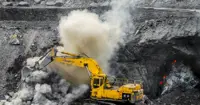India’s first high-speed rail corridor — the Japan-backed Mumbai-Ahmedabad bullet train project — look set for meet its August 2022 deadline with the National High Speed Rail Corporation Limited (NHSRCL) floating its first tender for building a bridge in Navsari district of Gujarat.
The floating of the tender itself is a sign of a gradual end to the deadlock over land acquisition in Maharashtra and Gujarat. Report quoting sources said there are encouraging signs from Palghar in Maharashtra, where the NHSRCL officials have been battling resistance from farmers, who are supported by MNS and local Shiv Sena units.
The $17-billion bullet train project, scheduled to be completed by August 2022, was likely to be delayed due to problems in land acquisition. It faced stiff resistance from farmers and tribal villages, especially in the Palghar district of Maharashtra.
The Indian Railways needs to acquire around 1,400 hectares of land along the route in Maharashtra and Gujarat at a cost of Rs10,000 crore.
In Palghar, in Maharashtra, where 300 hectares of land is required, the NHSRCL has been able to rope in women of 73 villages where land is to be acquired, says the report.
These women have been entrusted with the task of facilitating communication between the village heads and NHSRCL engineers for the joint measurement survey. A team of 15 women from various blocks has been set up to explain the compensation packages being offered and the exact land requirement.
This seemed working as the project team has been able to conduct surveys in 18 of the villages. Till a few months ago, the survey teams could not even enter some of these areas. In Dahanu, for instance, where the project team even faced violence, officials have now been able to establish contact with all the 16 villages where land is required.
“We have been able to establish dialogue with all the concerned in the villages so that there are no misgivings or lack of understanding about the project, as well as what we offer to the locals,” reports quoting NHSRCL spokesman Dhananjay Kumar as saying. “We are on schedule as per the timeline of the project,” he said.
Additionally, the women team is also documenting the needs of the villages such as building a boundary wall around water bodies that are the source of irrigation, taking care of medical facilities etc.
However, out of the total land requirement of around 1,400 hectares, only around 0.9 hectares of land has so far been acquired for the corridor. NHSRCL officials claim that they would be able to stick to their timeline of starting civil work by December 2018 to January 2019.
Constriction of the 508-km long rail corridor was to begin in January 2019 and the deadline for land acquisition is to end this year. The centre wants the project’s completion target to be advanced by a year to 2022, the 75th year of India’s independence.































